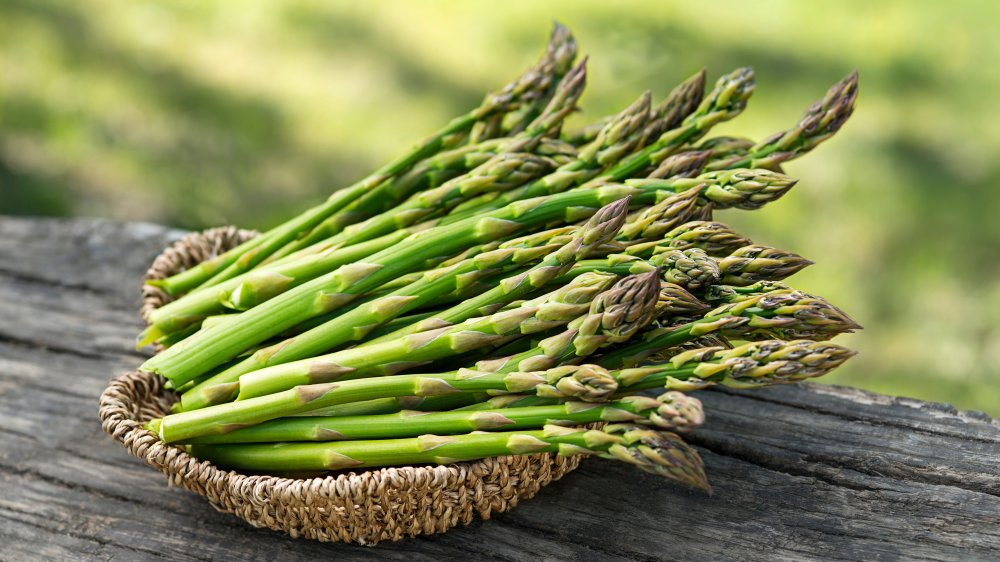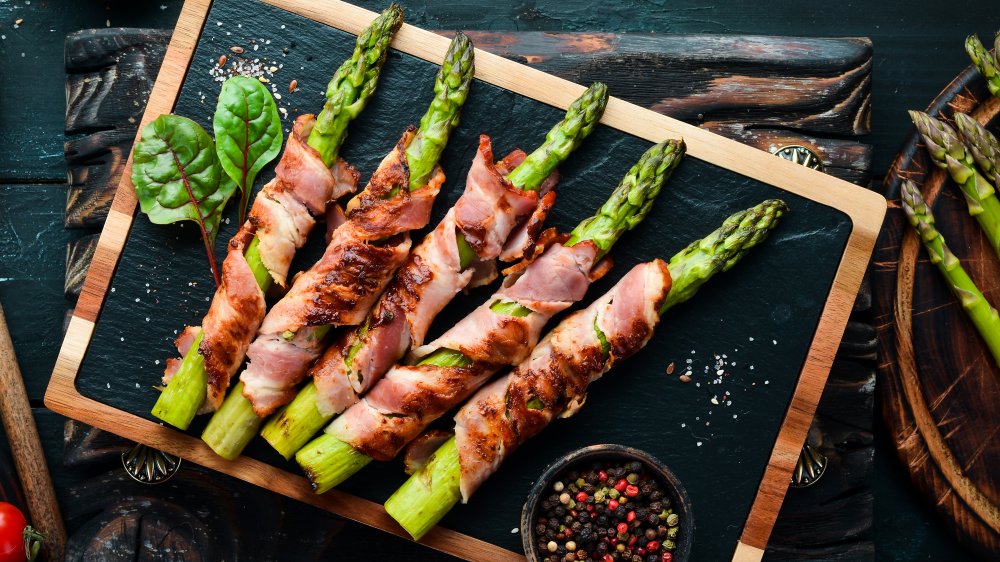The Real Difference Between Fat And Skinny Asparagus
Whether you prefer fat or skinny asparagus is like asking people the correct way to make a peanut butter and jelly sandwich – everyone has strong opinions, and all of the options have merit. So what's the difference between the two, and why does it matter?
The first thing you should know is that fat, large asparagus stems are not skinny asparagus spears that have been left in the field for longer (via Cook's). Asparagus plants can live up to 20 years, and the age of the plant, not the yearly growth, is what determines spear size. Older plants make larger spears, and younger ones make skinnier spears. The variety of the asparagus can also influence the fat vs. skinny size (think cherry tomato vs. Roma). Often, different varieties will show in different colors, such as white asparagus, which is common in European dishes, or purple asparagus, known to be sweet and tender compared to other varieties (via Backyard Vegetable Gardening). Yet even green asparagus can have differences, like Jersey Giant, which is short and thick, or Mary Washington, which is middling in size.
You'll also find a difference in taste based on harvesting. A large amount of asparagus is actually shipped from South America (via Martha's Vineyard Magazine). Asparagus is like corn, in that the sugar content starts to disappear moments after picking. Unlike corn, however, this sugar doesn't convert to starch but to tough fibers, so it's best to eat asparagus as fresh as possible.
Peeled or petite, aspargus uses are diverse
Both types of asparagus can be prone to having a woody stalk base, which should be snapped off before cooking. Alternatively, you can cut the ends or use an asparagus peeler to remove the woody exterior of larger spears. If you don't have an asparagus peeler, a standard veggie peeler will work — simply lay the fat stalks flat and give them a few swipes (via New York Times). By removing this woody exterior, you've significantly equalized the difference most people complain about with skinny vs. fat asparagus — texture.
When it comes to taste, both varieties are described by Cook's as being equally sweet, nutty, and grassy. Peeled asparagus eliminates the need to overcook fat spears, so they can be served in a delicate manner just like skinny spears.
But there's another difference between fat and skinny asparagus when it comes to cooking. Large peeled spears lend well to heavier cooking methods like grilling, steaming, or poaching. Skinny spears can quickly overcook, so they often work well in lighter applications such as a light braise, sautee, or even eating the spears raw. Your choice of the best asparagus can be based on taste or simply based on the preparation method you want to use.

